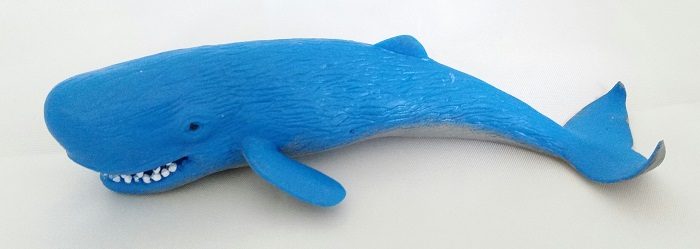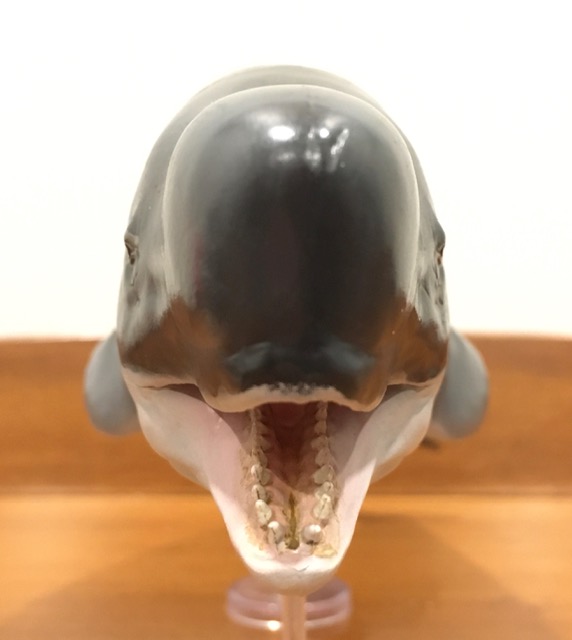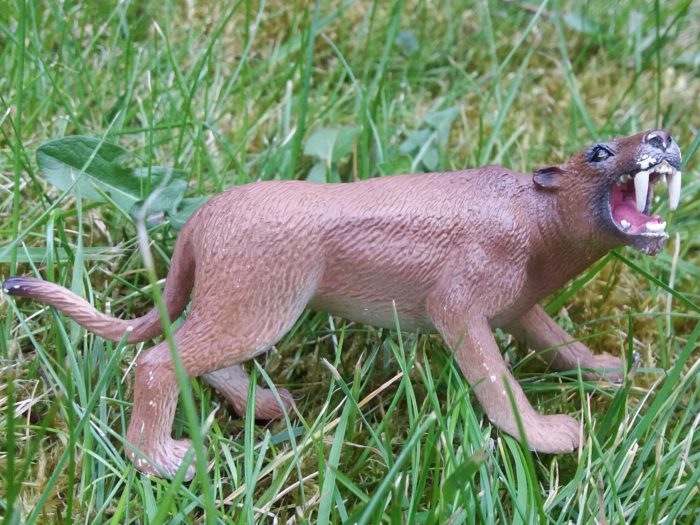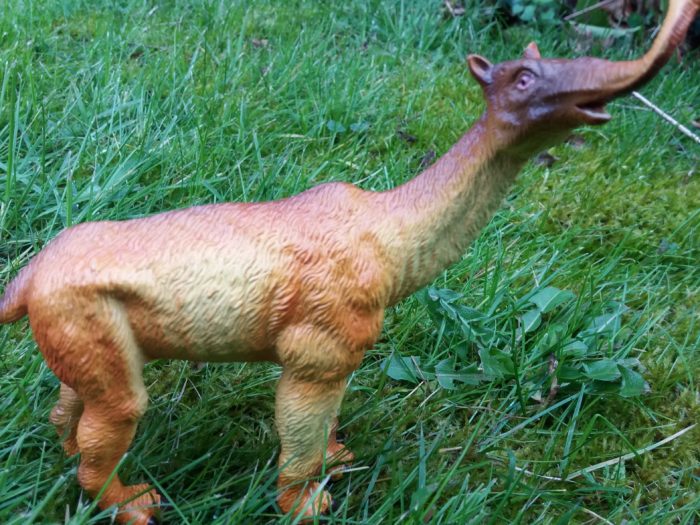If you’ve ever wanted to build a diorama with your megalodon toys, you’ve probably noticed that there aren’t many other Miocene sea monster toys to pair them up with, although luckily plenty of the fish, turtles, and invertebrates alive then were very similar to modern ones. Today’s review concerns a contemporary of the famous shark, but it’s a rendition that’s unlikely to do much to enhance your diorama.
Age: Miocene
Review: Livyatan (PNSO)
Review: Machairodus (Bullyland)
Review: Macrauchenia (Jurassic Hunters by Geoworld)
Review: Macrauchenia (MPC)
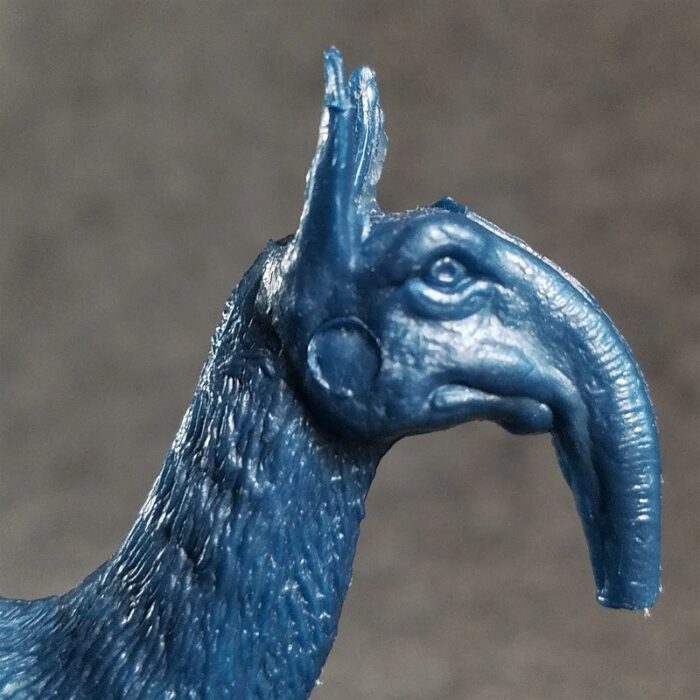
“If MPC Ran the Zoo”…
Macrauchenia looked like it could have inspired some of the creatures in a Dr. Seuss book, if its history of paleoart is anything to go by. First described in 1838, the “long-necked llama” hasn’t achieved the same level of fame as some of its mammalian contemporaries from the Miocene and Pleistocene; however, its lanky legs, long neck, and peculiar trunk make for a very distinct image, and have earned the genus at least a few toys over the decades.
Review: Macrauchenia (Prehistoric Mammal Series by Schleich)
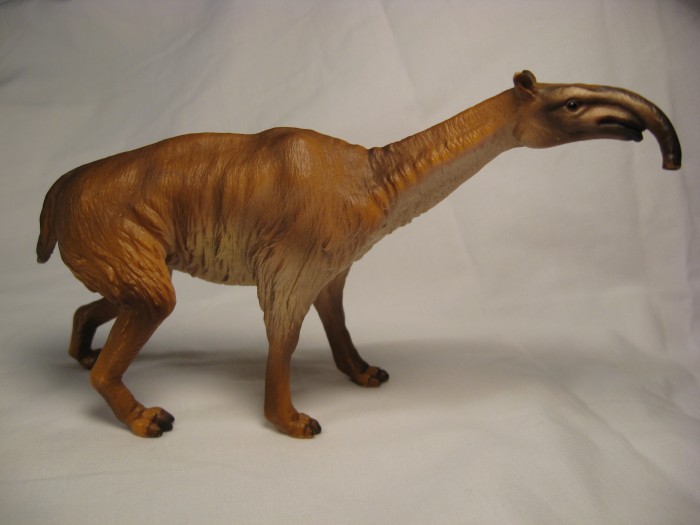
Review: Macrauchenia (Wild Safari by Safari Ltd.)
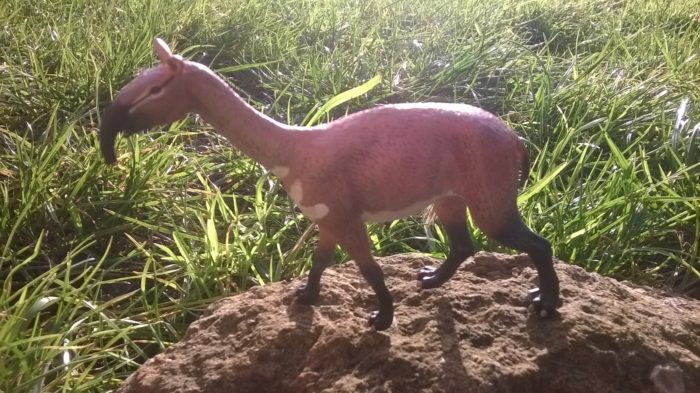
Island isolation can have some amazing results in terms of evolution. Insular dwarfism for some organisms, gigantism for others, or simply some of the oddest creatures that can be conceived. Today’s review subject is an example of the latter, Macrauchenia, a liptotern from South America, which was an island continent during most of the Cenozoic era.
Review: Marsupial Tapir/ Palorchestes (Lost Kingdoms Series A by Yowie)
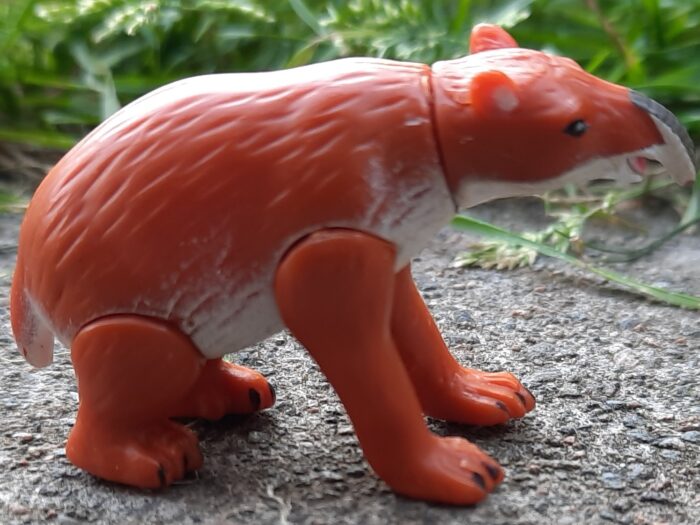
Interpreting fossils is never an easy task. Unless the animal was complete when found, or very well preserved, it can be hard to tell what an animal looked like. Prehistoric animals can be revised over and over as new information comes in about them. One animal that has been altered several times is Palorchestes, which was thought to be a kangaroo relative, then more tapir based as a result of the rostrum, and more recently, similar to a giant ground sloth.
Review: Medusa (Bullyland)
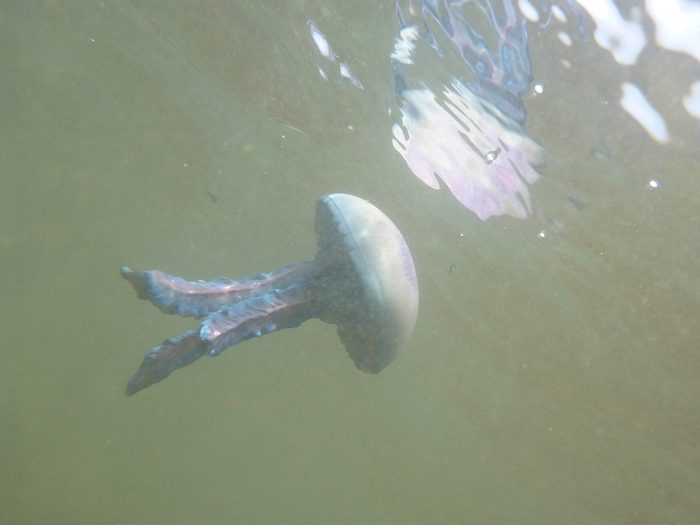
Today I want you to introduce you to one of those creatures everybody knows, but knows almost nothing about, a jellyfish. Jellyfish are a very very old group of animals, they date back to the famous Ediacarian, more than 600 mya.
Review: Megalodon ( PNSO Scientific Arts)
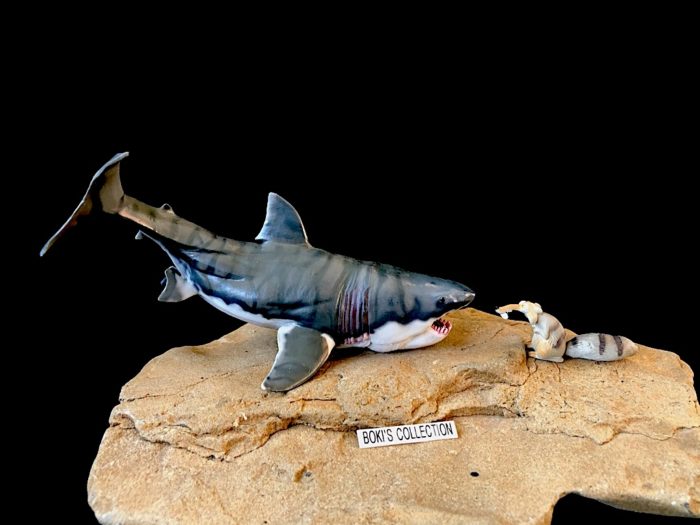
Review and photos by Bokisaurus
When it comes to suffering from identity crisis, no other extinct species exhibits this more than the mighty Megalodon (Carcharocles megalodon), which is ironic given how popular it is.This identity crisis is of course due to the fact that very little fossil material is available to help create an accurately restoration of it and that the majority of the restorations, from paleo art to movies, are all based on the extant Great White shark, a species that many believed for years it resembles.
Despite this crisis, Megalodon is the most famous of the extinct sharks, and possibly only surpassed in popularity by the extant Great White that still roam todays oceans.
Review: Megalodon (Age of the Dinosaurs by PNSO)
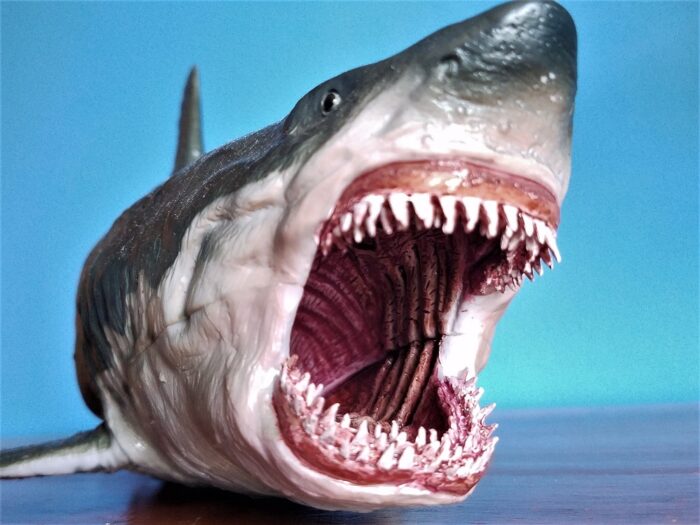
This is no mere great white copy; Patton the Megalodon is a grade-A movie monster, a hulking brute with commanding shelf presence.
Let’s face it: people love apex predators. We’re scared of them, sure, but we also admire them and get excited by them. Sharks are one group of predators we humans seem particularly drawn to, and their fossil record shows a long history which eclipses the age of dinosaurs by a mile.
Review: Megalodon (Deluxe by CollectA)

Anne Bonny is on the chase. She had been following the distant scent of a whale pod when a strange new scent and a distinct sound of splashing caused her to veer hard to starboard in the direction of the islands along the coastline. As she approaches closer, her many senses quickly inform her that a large beast is swimming slowly and clumsily at the surface.
Review: Megalodon (Soft Model by Favorite Co. Ltd.)

Review and photos by Zim, edited by Suspsy
Otodus megalodon is probably one of the most well-recognized prehistoric animals of all time due to our fascination of giant versions of animals, in this case, sharks. Though it is frequently depicted as an oversized great white shark due to the resemblance between their teeth, many experts now agree that this is due to convergent evolution rather than a close relation.
Review: Megalodon (Wild Safari by Safari Ltd.)

Review: Monanthesia and Cycadeoidea (CollectA)

Greens, stems, and leaves, but no teeth, no blood, no gore . . . no wonder plants seldom provide more than background for movies or our dinosaur collections. Day of the Triffids (1962) is the classic plant horror film par excellence, where seemingly harmless plants attack and kill humans and charge to take over world domination within days (for those of you that can’t stand classic B-movies or modern semi-quality TV adaptations of them, Splinter may be a more thrilling choice, though the antagonist is !SPOILER ALERT!

